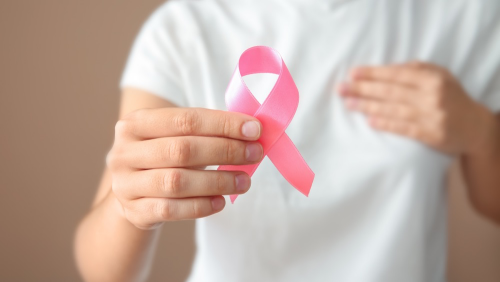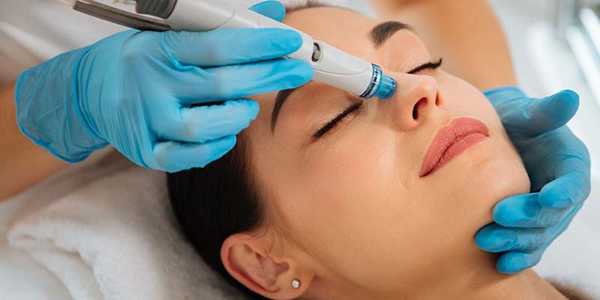Prêt rapide en ligne : la solution idéale pour vos besoins urgents
Understanding Triple-Negative Breast Cancer: Key Insights
Triple-negative breast cancer (TNBC) is a subtype of breast cancer that is known for its aggressive nature and poor prognosis compared to other types. It accounts for around 10-15% of all breast cancer cases and is characterized by the absence of three key receptors: estrogen, progesterone, and HER2. These receptors are commonly targeted in other types of breast cancer treatments, making TNBC harder to treat.
Triple-negative breast cancer (TNBC) is a subtype of breast cancer that is known for its aggressive nature and poor prognosis compared to other types. It accounts for around 10-15% of all breast cancer cases and is characterized by the absence of three key receptors: estrogen, progesterone, and HER2. These receptors are commonly targeted in other types of breast cancer treatments, making TNBC harder to treat.

What is Triple-Negative Breast Cancer?
Triple-negative breast cancer gets its name because the cancer cells lack the three most common receptors that drive breast cancer growth:
- Estrogen Receptors (ER): Normally, cancer cells with estrogen receptors are treated with hormone therapies that block estrogen. However, in TNBC, these receptors are absent.
- Progesterone Receptors (PR): Like estrogen, progesterone can drive the growth of certain cancers. TNBC cells do not have progesterone receptors.
- HER2: This protein is often overexpressed in some types of breast cancer, leading to rapid cell growth. TNBC does not overexpress HER2 either.
Because TNBC lacks these receptors, treatments like hormone therapy and targeted therapies (e.g., HER2 inhibitors) do not work for this type of cancer. Chemotherapy remains the most effective treatment option.
Causes and Risk Factors of Triple-Negative Breast Cancer
The exact cause of TNBC is not fully understood, but several factors increase the risk of developing this form of breast cancer:
- Genetics: Inherited mutations in the BRCA1 geneare strongly linked to TNBC. Women with a BRCA1 mutation are more likely to develop TNBC at a younger age.
- Age: TNBC is more commonly diagnosed in younger women, particularly those under 50 years old.
- Ethnicity: African American and Hispanic women are more likely to develop TNBC compared to women of other ethnicities.
- Lifestyle Factors: Sedentary lifestyle, obesity, and lack of physical activity may contribute to the development of TNBC.
- Hormonal Factors: Women who use hormone replacement therapy (HRT)for prolonged periods may have an increased risk of developing breast cancer, including TNBC.
Symptoms of Triple-Negative Breast Cancer
The symptoms of TNBC are similar to those of other types of breast cancer. Common symptoms include:
- A lumpin the breast or underarm
- Changes in breast sizeor shape
- Painor tenderness in the breast area
- Nipple inversionor discharge
- Skin changessuch as redness or dimpling
If any of these symptoms are present, it is important to see a healthcare provider for evaluation.
Stages of Triple-Negative Breast Cancer
Like all cancers, TNBC progresses through different stages. The staging helps determine how far the cancer has spread and the most appropriate treatment options:
- Stage 0: Abnormal cells are found in the breast, but they have not spread.
- Stage 1: The tumor is small and localized in the breast or nearby lymph nodes.
- Stage 2: The tumor grows larger or spreads to additional lymph nodes.
- Stage 3: Cancer spreads to nearby tissues and lymph nodes.
- Stage 4: Cancer has spread to distant parts of the body, such as the lungs, liver, or bones.
Treatment Options for Triple-Negative Breast Cancer
Treatment for TNBC typically involves a combination of surgery, chemotherapy, and sometimes radiation:
- Surgery: This may involve a lumpectomy(removal of the tumor) or mastectomy (removal of the entire breast).
- Chemotherapy: This is often the cornerstone of TNBC treatment. Chemotherapy may be used before surgery to shrink the tumor (neoadjuvant therapy) or after surgery to kill remaining cancer cells (adjuvant therapy).
- Radiation: After surgery, radiation therapy may be used to target any remaining cancer cells in the breast or chest area.
- Immunotherapy: Recently, immunotherapy has shown promise, especially for advanced TNBC. This therapy boosts the body’s immune system to fight cancer cells.
Side Effects of TNBC Treatments
Treatment for TNBC can lead to several side effects, which can vary depending on the type of treatment:
- Fatigue: Common after chemotherapy and radiation.
- Nausea and Vomiting: Often a result of chemotherapy, but medications can help manage this.
- Hair Loss: Chemotherapy often causes temporary hair loss.
- Skin Changes: Radiation can cause skin redness, irritation, or peeling.
- Lymphedema: If lymph nodes are removed during surgery, fluid can accumulate, causing swelling in the arms or legs.
Lifestyle and Diet Recommendations
While undergoing treatment for TNBC, adopting a healthy lifestyle can help support recovery:
- Eat a Nutrient-Rich Diet: Focus on foods that are rich in antioxidantsand phytochemicals, such as turmeric, berries, broccoli, and green leafy vegetables. These can help combat inflammation and support the body’s ability to fight cancer.
- Exercise Regularly: Physical activity can help alleviate fatigue, improve mood, and enhance overall health.
- Avoid Processed Foods: Reducing the intake of processed foods, alcohol, and excessive sugar can improve your overall health and recovery during treatment.
Prognosis and Survival Rate
The prognosis for TNBC largely depends on the stage at diagnosis. Early-stage TNBC has a better survival rate, with five-year survival rates of 91% for localized cases. However, TNBC is more likely to recur compared to other types of breast cancer, particularly within the first few years after treatment.
For patients with advanced-stage TNBC, the survival rate drops significantly. However, new treatments like immunotherapy are offering hope and improving outcomes for many patients, even those with advanced or recurrent TNBC.
Conclusion
Triple-negative breast cancer is a challenging and aggressive form of breast cancer, but with early detection, effective treatment, and a healthy lifestyle, it is possible to manage the disease and improve outcomes. Chemotherapy remains the cornerstone of TNBC treatment, though advancements in immunotherapy are showing promising results. Regular monitoring, early intervention, and a comprehensive approach to care are crucial for managing this type of breast cancer. By staying informed and proactive, patients can better navigate the complexities of TNBC and optimize their chances for recovery.









